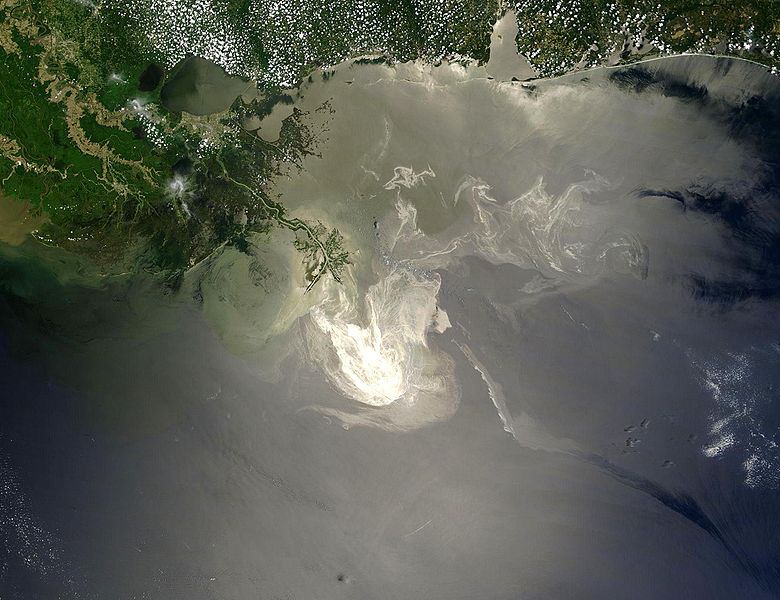
Sounds great! How does it work?
The company, Oil Therapy Solutions, explains the mechanics of the machine on its website. If you want to read the description verbatim, it’s at the end of the article.* Greg Lowry, an associate professor of civil and environmental engineering at Carnegie Mellon University, helped me translate the jargon into simpler English.
“It’s basically a centrifuge,” Lowry says, a machine that spins rapidly to separate fluids using centrifugal (well, technically centripetal) force. Think about a washing machine in spin cycle. If you open it up, you’ll see the wet clothes flung against the side of the washer. That’s the same force Costner’s machine employs. It spins the oily water, flinging the denser liquid, water, away from the lighter liquid, oil (which you know is lighter since you’ve seen the picture of it floating on top of the Gulf). It’s the same technology beer companies use to spin the solid yeast particles of out their brew.
Oil-water separation devices exist, Lowry says, but many of them use holding ponds to drain the liquids. The centrifuge is the new part of this solution, but from what he can tell, “it’s not exotic at all.”
One challenge for the centrifuge in the Gulf is that the chemicals BP used to disperse the oil under water might complicate the cleaning.”Think about it,” Lowry says. “You’re operating on phase [liquid] separation. You want one phase to move in one direction and the other phase in another. If small droplets are stuck in the water they might move with the water. So those tiny droplets could hurt the efficiency of this process.”
In his testimony in front of the House Energy and Environment subcommittee, Costner requested Congress to mandate the purchase of these oil vacuums for every oil company as “insurance” against the likelihood they might spill crude into the sea—kind of like a life vest for oil clean-ups. Now that BP has employed at least ten of his most powerful centrifuges, we’ll see if Costner’s investment pays off.
* OTS describes the oil vacuum: “Two mixed liquid phases, such as water and oil, are drawn into the annulus between the contacter body and the rotar. Liquids gravitate downward in the annulus where rotational liquid motion is slowed by radial vanes in the bottom plate. After entering a hole at the base of the rotar, the liquid phases are then centrifugally separated into a duel vortex because of the density difference between the two fluids. In the case of water and oil, because of the density difference, heavier water exits the rotar from a hole at the top of the unit, while the lighter oil is recovered near the central shaft.”
This post was produced by The Atlantic as part of the Climate Desk collaboration.












